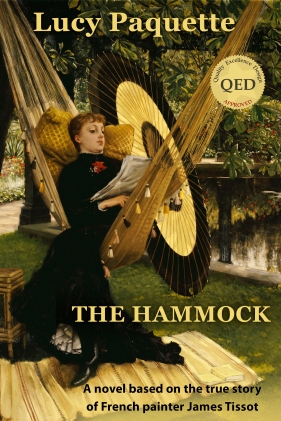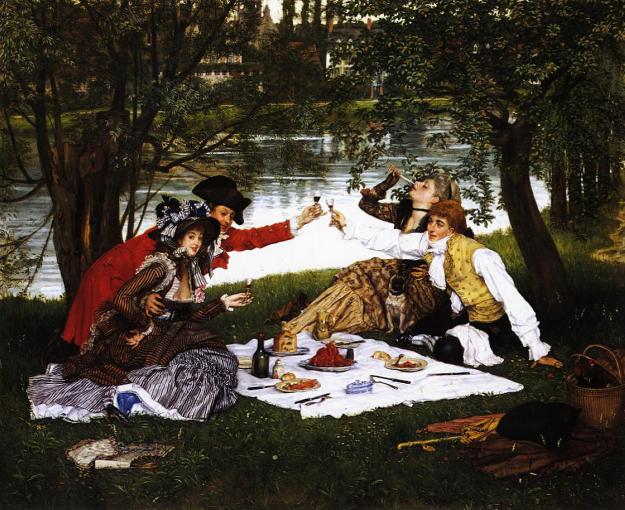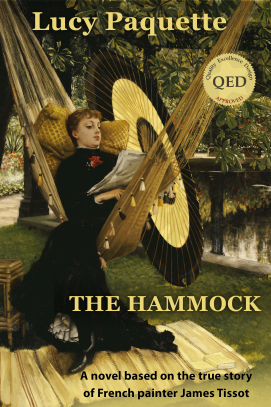To cite this article: Paquette, Lucy. “The Company He Kept: James Tissot’s Friends.” The Hammock. https://thehammocknovel.wordpress.com/2017/09/15/the-company-he-kept-james-tissots-friends/. <Date viewed.>
If a person can be known by the company he keeps, James Tissot’s friends indicate he was charming, broad-minded and cultured, interested in music and literature as well as art, resourceful, and unafraid of change. Described as reserved, he had a strong work ethic and spent a great deal of time working in his studio. But he seems to have made friends easily and maintained numerous mutually satisfying relationships over many years – with both men and women, of varied ages, religions, backgrounds, and temperaments.

James Tissot, age 20-21
Jacques Joseph Tissot’s first friend may have been his mother. When he realized that what he really wanted was a career in art instead of architecture, his businessman father was less than thrilled. His father told him that if he was determined to pursue this unreliable profession, he was going to have to make it on his own – with no financial help. But his mother found a connection for him in Paris, and Jacques left home at 19, in 1856 (i.e before he turned 20 that October).
Within three years of his arrival in Paris, Tissot was ready to exhibit his work at the Salon. Competing with established artists, the 23-year-old student submitted five entries for the Salon of 1859. The jury accepted them all, including Portrait de Mme T…, a small oil painting of his mother. With her belief in him, his career in the capital of the European art world was launched.

James Whistler
When Jacques Joseph Tissot exhibited in the Salon, it was as James Tissot – and it’s likely he borrowed the name from another young art student, James Whistler.
It is thought that when Tissot registered for permission to copy paintings at the Louvre on January 26, 1857, he met the pugnacious American James McNeill Whistler (1834 – 1903), reportedly while copying Ingres’ 1819 Ruggiero Freeing Angelica side by side in the Luxembourg Museum.

Self-Portrait with White Collar (c. 1857), by Edgar Degas. National Gallery of Art, Washington, D.C. (Photo by Lucy Paquette)
In 1859, Tissot met another art student, with whom he became close friends – Edgar Degas (1834 – 1917). Degas, the curmudgeonly son of a prosperous banker from Naples and a mother from New Orleans, had spent the previous three years traveling in central Italy. Probably through Degas, Tissot soon met the charismatic, restless Édouard Manet (1832–1883).

Lawrence Alma-Tadema
In 1859, Tissot traveled to Antwerp, augmenting his art education by taking lessons in the studio of Belgian painter Hendrik Leys. There he made friends with a young Dutch art student working with Leys, Lourens Tadema (1836 – 1912; the painter moved to London in 1870 and restyled himself Lawrence Alma-Tadema).
Alma-Tadema’s personality combined middle-class sensibilities with a ribald sense of humor. He was an extrovert who loved wine, women, music, and practical jokes.

Édouard Manet

Emmanuel Chabrier, by Édouard Manet
Though still living in the dilapidated Latin Quarter at 29, Tissot was enjoying increasing professional success and was described as a boulevardier – a man-about-town. In addition to painters, his friends included the poet Camille-André Lemoyne (1822 – 1907), “a man of modesty and merit” who dedicated a published poem, “Baigneuse,” to Tissot in 1860, and composer, pianist and bon vivant Emmanuel Chabrier (1841 – 1894), whose portrait Tissot drew in 1861. His circles often overlapped; Chabrier, for example, was friends with Degas and Manet as well.

John Everett Millais
In 1862, Tissot traveled to London, where the first exhibition of his work was at the International Exhibition. He showed one of his début paintings from the Paris Salon of 1859, and he must have met Britain’s most popular painter, John Everett Millais (1829 – 1896). Warm-hearted, boyish, and boundlessly self-confident, Millias had a wife and five children to provide for by this time. He found a steady source of income drawing illustrations, for periodicals such as Once a Week and The Cornhill Magazine as well as Tennyson’s Poems (1857) and Anthony Trollope’s novel Framley Parsonage (1860). James Tissot, at 26, having inherited his parents’ business sense, was exploring a new art market and making useful contacts.

Alphonse Daudet
In 1863, Tissot became close friends with Alphonse Daudet (1840 – 1897), a young writer who had published a volume of poetry (The Lovers) in 1858, and who rented the room below him in the rue Bonaparte. Daudet, who was kind, hard-working, generous and sociable, was employed as a secretary to the Duc de Morny, the Emperor’s illegitimate half-brother who served as a powerful appointed minister. He eventually became wealthy from his novels, in which he wrote about the poor and downtrodden with sympathy, and his friendship with Tissot was a lifelong one.
In 1864, the year Millais was elected a member of the Royal Academy, Tissot again exhibited work in London: two pictures on display at the Society of British Artists, and a small oil painting at the Royal Academy Exhibition. In France, Tissot associated, loosely, with a band of artistic rebels led by Manet – men who met at the Café de Bade to debate the purpose of art and express their frustration with the rigidity of the Paris art Establishment. But Tissot was a traditionalist at heart. He must have admired Millais – as a man, as a painter, and as a successful businessman. In 1865, Tom Taylor’s Ballads and Songs of Brittany was published in London, illustrated by several artists including Millais and Tissot, who provided the Frontispiece and further widened his reputation in Great Britain.

Ernest Meissonier

Ferdinand Heilbuth
In 1866, the thirty-year-old artist bought land to build a villa on the most prestigious of Baron Haussmann’s grand new Parisian boulevards, the eleven-year-old avenue de l’Impératrice (now avenue Foch). By the Salon of 1868, Tissot had occupied his newly built, elegant mansion in the splendid avenue, the place to see and be seen amid the heady delights of life in the imperial capital. But an early biographer asserted that there were no parties or receptions in this home, as Tissot dreaded the noise; he hosted only quiet gatherings with intimates such as Degas, eminent painter and sculptor Ernest Meissonier (1815 –1891), and painter Ferdinand Heilbuth (1826 – 1889).

Alfred Stevens
Tissot and wildly successful Belgian painter Alfred Stevens (1823 –1906) moved in the same social circle, which included Manet, Degas, Frédéric Bazille, Berthe Morisot and Whistler as well as Alma-Tadema. Stevens and his wife held regular receptions at their home on Wednesdays. Tissot may have preferred quiet evenings with his friends in his new villa, but in early 1868, he scribbled a hurried message to Degas on the back of a used envelope when he found Degas away from his studio: “I shall be at Stevens’ house tonight.” He had dropped by to give Degas advice on finishing a problematic painting-in-progress, Interior (The Rape) before the Salon deadline.
Tissot appears to have been content to live well and maintain a fairly low profile in the art world he had conquered within a decade of his arrival as a provincial art student. Oddly, there are almost no references to Tissot in letters, journals or accounts of his chatty friends and acquaintances during this time, even though his studio was a chic gathering place, and it is likely he visited crowded, gossipy weekly soirées such as those hosted by Madame Manet (Edouard’s formidable mother) on Tuesdays, the Stevenses on Wednesdays, and Madame Morisot (Berthe’s formidable mother) on Thursdays.
In 1869, Tissot began contributing political cartoons to the newest Society journal in London, Vanity Fair, founded by Thomas Gibson Bowles (1841 – 1922). Tommy Bowles was the illegitimate son of Thomas Milner Gibson (1806 – 1884), a Liberal MP for Manchester and President of the Board of Trade from 1859 to 1866, and a servant, Susannah Bowles. Tommy’s father (and even his father’s wife, Arethusa Susannah, a Society hostess who was the daughter of Sir Thomas Gery Cullum of Hardwick House, Suffolk, and their six children) acknowledged him. Tissot, at 33, was famous in Paris. Tommy, a handsome blue-eyed blonde, was five or six years younger and making a name for himself, even in France, with his controversial articles in London’s Morning Post.
It is strange, the life Tissot led – an exclusive address and titled patrons in Paris and yet close friends with the individualistic, struggling Edgar Degas (who ceased to exhibit in the Salon after this year, due to his discontent with it), the illegitimate and irreverent London publisher Tommy Bowles, and the renegade James Whistler, who was considered belligerent and uncouth by this time.
It seems that James Tissot was a peaceable, refined, and multifaceted gentleman, truly his own man – in a world about to implode.
The Franco-Prussian War united Tissot and Tommy Bowles, who raced to Paris as a war correspondent. Because there were not enough French troops, a National Guard – a volunteer militia independent of the regular army – was forming to defend Paris. On Friday, September 9, 1870, Tommy was surveying the scene of Garde Mobile squads drilling or wandering around along the avenue de l’Impératrice [near James Tissot’s sumptuous villa at No. 64], “when my hand was suddenly seized, and I found myself talking to one of my smartest Parisian friends [James Tissot] who had donned the blue uniform like everybody else. He was delighted to see me.” Tissot gamely promised that if there was a sortie, he would make sure that Tommy had the chance to see some action. [Tissot scholar Willard E. Misfeldt learned that James Tissot actually had enlisted in the Garde Nationale de la Seine, the Fourth Company of the Eighteenth Battalion, in 1855 – as soon as he had arrived in Paris at age 19.]
In early October, military operations blocked access to Tissot’s new villa, and he turned up at Bowles’ rented apartments. Tommy observed affectionately of his friend, “We neither of us have got any money left, but we propose to support each other by our mutual credit…and to share our last rat together. Meantime we are not greatly to be pitied. Our joint domestic, Jean, one of those handy creatures yet to be invented in England, makes our beds, scrubs the floor, brushes the clothes, cooks like a cordon bleu, and is, as we believe and fervently hope, capable of producing any explanation or invention that may be required by persons in search of payment. He has been especially successful as regards meat.” The British journalist and the French painter shared a mischievous sense of humor, numerous dangerous sorties – and strong survival instincts.

The Tirailleurs de la Seine at the Battle of Rueil-Malmaison, 21st October 1870 (1875), by Étienne-Prosper Berne-Bellecour. (Oil on canvas, 103×203 cm; Château de Versailles, France; Giraudon). Photo courtesy of The Bridgeman Art Library for use in “The Hammock: A novel based on the true story of French painter James Tissot,” by Lucy Paquette © 2012
On October 21, 1870, the men in Tissot’s unit – the Éclaireurs of the Seine, an elite unit of scouts and snipers (tirailleurs) – “one and all Parisians of the purest type” according to Tommy Bowles – were sent to fight in the Battle of Malmaison (also referred to as the Battle of Rueil-Malmaison, or La Jonchère, for the nearby towns), west of Paris. [See James Tissot and The Artists’ Brigade, 1870-71.]
During the war, James Tissot fought with valor on the front line, and he later volunteered as a Red Cross stretcher-bearer. Then he became involved in the bloody civil uprising that followed, the Paris Commune. He fled to London with a hundred francs in his pocket. There, he had plenty of friends to help him rebuild his life.

Chichester Fortescue
Besides Tommy Bowles, there was Frances, Countess Waldegrave (1821 – 1879), an influential Liberal Society hostess whose fourth and final husband was Chichester Fortescue (1823 – 1898), an Irish MP, who became Lord Carlingford. Tissot may have met her through Millais, who frequented her salons. She shared Tissot’s interest in spiritualism and painting, and at some point, Tissot painted her portrait in her boudoir. (The portrait, whereabouts unknown, was not considered a good likeness.)
In 1871 – shortly after Tissot fled Paris – the charming and “irresistible” Countess Waldegrave pulled strings to get Tissot a lucrative commission to paint a full-length portrait of Fortescue, which was funded by a group of eighty-one Irishmen including forty-nine MPs, five Roman Catholic bishops and twenty-seven peers to commemorate his term as Chief Secretary for Ireland under Gladstone – as a present to his wife.

Ouida
Tissot also was friendly with Society novelist Ouida (Maria Louise Ramé, 1839 – 1908); on June 19, 1871, she sent him an invitation to visit on June 21, with the promise that “some English artists will enjoy the great pleasure of meeting you & seeing your sketches.” Described as having a “sinister, clever face” and a “voice like a carving knife,” Ouida lived in the Langham Hotel, where surrounded by purple flowers, she wrote on large sheets of violet-colored notepaper in bed by candlelight. Her lavish soirées included celebrities such as Oscar Wilde, J.E. Millais. Algernon Charles Swinburne, and Wilkie Collins, along with dozens of handsome guard officers.

The Captain and the Mate (1873), by James Tissot. The Captain and the Mate (1873), by James Tissot. Oil on panel, 53.6 by 76.2 cm. Private Collection. Courtesy of The Bridgeman Art Library for use in “The Hammock: A novel based on the true story of French painter James Tissot,” © 2012 Courtesy of The Bridgeman Art Library for use in The Hammock: A novel based on the true story of French painter James Tissot, © 2012
Once Tissot moved to London in 1871, he continually sought “British” subject matter, always offering it up with a French twist. He soon found a friend in Captain John Freebody (1834 – 1899), master of the Arundel Castle from 1872-73, when he took emigrants to America. Captain Freebody’s wife, Margaret Kennedy (1840 – 1930), modeled for The Captain’s Daughter, set at the Falcon Tavern in Gravesend. Tissot exhibited The Captain’s Daughter, as well as two other paintings [The Last Evening (1873) and Too Early (1873)], at the Royal Academy in 1873.
Two other paintings featuring Margaret Kennedy are in a private collection: Boarding the Yacht (1873) and The Captain and the Mate (1873), in which Margaret’s older brother, red-bearded Captain Lumley Kennedy (1819 – 1899), and her sister posed as well. Tissot, having grown up in the bustling seaport of Nantes, where his father was a successful wholesale linen draper (a trader in fabrics and dress trimmings to retailers and exporters), must have felt quite comfortable with sailors and their families.
Within a few years of hard work and help from such friends, Tissot bought the leasehold to a house in St. John’s Wood, at 17 (now 44) Grove End Road, and built an extension with a studio and a conservatory. A handsome and talented 35-year-old Parisian, he earned and returned the respect of intelligent and capable women.

Louise Jopling
British painter Louise Jopling (1843 – 1933) lived in Paris from 1865 to 1869, when her ne’er-do-well husband, Frank Romer, was sent packing by his employer, Baron de Rothschild. Louise had been painting with the encouragement of the Baroness, a watercolor artist, and after moving to London, Louise continued painting despite numerous hardships. Her work was exhibited at the Royal Academy exhibitions after 1870, and she met “that extraordinarily clever French artist, James Tissot,” when his
picture, Too Early, “made a great sensation” at the 1873 exhibition. Tissot gave her a sketch of Gravesend he made that year. In her 1925 autobiography, Louise wrote of him, “James Tissot was a charming man, very handsome.”
Louise proved to be an excellent source of information on Tissot’s personality, including this anecdote about a day they spent with Ferdinand Heilbuth. She wrote, “Heilbuth was a delightful man as well as an excellent painter. He was a great friend of Tissot…One day, before I was married, he arrived at my studio and said he had a letter from Tissot, who begged him to come round to me and try to induce [my sister] Alice and I to come spend the day at Greenwich where he was painting his charming pictures of scenes by the Thames. I was to bring my sketching materials. I had promised [my fiancé] Joe to give him a sitting for my portrait, but it was much too delightful a project not to be accepted with fervor. I wired to Joe, “Called out of town on business.”

Berthe Morisot, by Édouard Manet
Berthe Morisot (1841 – 1895) also appreciated Tissot. He socialized frequently in 1875, inviting Berthe Morisot to dinner at his home in St. John’s Wood when she was in England for her honeymoon. She wrote to her sister, Edma Pontillon, “We went to see Tissot, who does very pretty things that he sells at high prices; he is living like a king. We dined there. He is very nice, a very good fellow, though a little vulgar. We are on the best of terms; I paid him many compliments, and he really deserves them.”
During the same trip, Berthe wrote to her mother, “[I was dragged out of bed] just now by a letter from Tissot – an invitation to dinner for tomorrow night. I had to get up and ransack everything to find a clean sheet of paper in order to reply.” Later, she added, “He was very amiable, and complimented me although he has probably never seen any of my work.”
In 1873, Tissot joined the Arts Club in Hanover Square, and in 1875, Italian painter Giuseppe De Nittis (1846 –1884) wrote to his wife, Léontine, “I saw Tissot at the club, he was very nice, very friendly.”
In 1874, Degas invited both Tissot and De Nittis to display their work in the first exhibition by the French artists who would become known as the Impressionists. Tissot was achieving success in London and declined, but De Nittis accepted.

Sir Julius Benedict

Self-Portrait, Giuseppe Di Nittis
Another member of the Arts Club with whom Tissot was friendly was Sir Julius Benedict (1804 – 1885), the German-born composer and conductor who is portrayed as the pianist in Tissot’s Hush! (The Concert, 1875). The son of a Jewish banker, Benedict became a naturalised Englishman and was knighted in 1871.
After spending several weeks in Venice with Manet, Tissot dined at his friend Jimmy Whistler’s three-storey townhouse in Lindsey Row, Chelsea on November 16, 1875 with Alan S. Cole (1846 – 1934, a lace and textile expert who was the son of Sir Henry Cole, the first director of the South Kensington Museum, now the V&A), independent-minded, outspoken painter Albert Moore (1841 – 1893) and Captain Crabb (commander of The Brazilian in 1870) on topics such as “ideas on art unfettered by principles.”

George Adolphus Storey
On December 7, Tissot returned to dine with Jimmy, his patron Cyril Flower (1843 – 1907, later Lord Battersea), and painter George Adolphus Storey (1834 – 1919); they conversed on the works of Balzac.
Storey, in his 1899 memoirs, described a high-spirited “railway picnic party” in 1873 with men he referred to as intellectuals: Tissot, Heilbuth, Philip Hermogenes Calderon, R.A. (1833 – 1898), George Dunlop Leslie, A.R.A. (1835 – 1921), David Wilkie Wynfield (1837–1887), William Yeames, A.R.A. (1835 – 1918), Frederick Walker (1840 – 1875), editor Shirley Brooks (1816 – 1874) and “the Punch men,” pianist, conductor and composer Frederic Hymen Cowen (1852 – 1935), and a host of others returning from a grand house party in Manchester hosted by art dealer William Agnew (1825 – 1910). Opera star Charles Santley (1834 – 1922), Storey added, “sang us many of his delightful songs.”

Mavourneen (Portrait of Kathleen Newton, 1877). Oil on canvas, 36 in. /91.44 cm. by 20 in./50.80 cm. Photo courtesy of The Bridgeman Art Library for use in “The Hammock: A novel based on the true story of French painter James Tissot,” © 2012 by Lucy Paquette
As desirable he was as a guest, Tissot must have enjoyed entertaining in his turn. Louise Jopling noted of Tissot, “At one time he was very hospitable, and delightful were the dinners he gave. But these ceased when he became absorbed in a grande passion with a married woman.”
Around 1876, Tissot met Kathleen Newton (1854 – 1882), an Irish divorcée in her early twenties with a four-year-old daughter and a son born on March 21, 1876. [See James Tissot’s Model and Muse, Kathleen Newton and Was Cecil Newton James Tissot’s son?] Being Roman Catholic, Tissot and Kathleen could not marry, but she moved into his house in St. John’s Wood.

Sir Charles Wyndham

Sir Henry Irving
Kathleen’s two children lived with her sister’s family around the corner, and they and their cousins visited Kathleen and Tissot regularly. Tissot’s social life drastically changed, and he must have judged his love affair with the discarded young beauty well worth the sacrifice. Though cohabitation was common in Victorian England, especially in bohemian circles, it was not socially acceptable to most people in the middle and upper classes.
Though Tissot and Mrs. Newton were not invited out, their friendship was valued, and plenty of lively friends sought their company. One of Kathleen’s nieces, interviewed as an adult, recalled, “Whistler and Oscar Wilde, with his brother Willie, were constant visitors,” as were actor Henry Irving (1838 – 1905), actor-manager Charles Wyndham (1837 – 1919), and actress Miss Mary Moore (1860 – 1931, who became Wyndham’s second wife in 1916, the year he was widowed). Tommy Bowles, his longtime friend, remained a frequent visitor and introduced others including landscape painter William Stone (c. 1840 – 1913), who “often had tea in the garden with Tissot and the lady.” Stone, perhaps revealing the essence of Tissot’s charm, observed, “Tissot was quite a boulevardier and could not grasp our somewhat puritanical outlook.”
© 2017 by Lucy Paquette. All rights reserved.
The articles published on this blog are copyrighted by Lucy Paquette. An article or any portion of it may not be reproduced in any medium or transmitted in any form, electronic or mechanical, without the author’s permission. You are welcome to cite or quote from an article provided you give full acknowledgement to the author.
Related posts:
On his own: Tissot as a Paris art student, 1855 — 1858
James Tissot & Tommy Bowles Brave the Siege Together: October 1870
James Tissot and The Artists’ Brigade, 1870-71
James Tissot the Collector: His works by Degas, Manet & Pissarro
James Tissot and Alfred Stevens
James Tissot: Portraits of the Artist
 If you do not have a Kindle e-reader, you may download free Kindle reading apps for PCs, Smartphones, tablets, and the Kindle Cloud Reader to read The Hammock: A novel based on the true story of French painter James Tissot. Read reviews.
If you do not have a Kindle e-reader, you may download free Kindle reading apps for PCs, Smartphones, tablets, and the Kindle Cloud Reader to read The Hammock: A novel based on the true story of French painter James Tissot. Read reviews.
The Hammock: A novel based on the true story of French painter James Tissot, brings Tissot’s world from 1870 to 1879 alive in a story of war, art, Society glamour, love, scandal, and tragedy.
Illustrated with 17 stunning, high-resolution fine art images in full color
Courtesy of The Bridgeman Art Library
(295 pages; ISBN (ePub): 978-0-615-68267-9). See http://www.amazon.com/dp/B009P5RYVE.


.jpg)


.jpg)















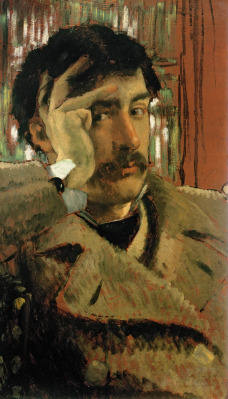





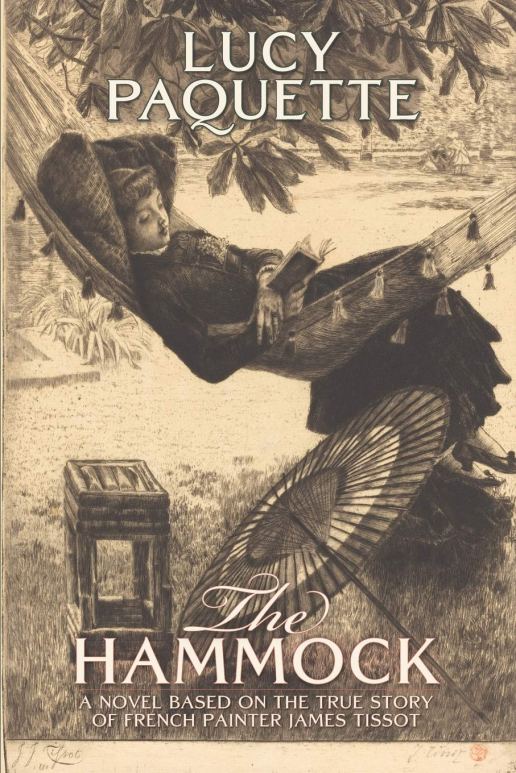
















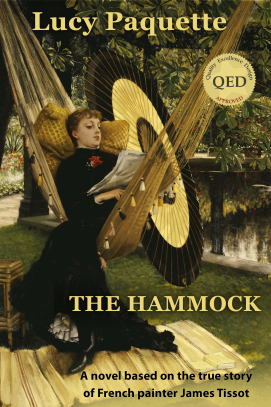







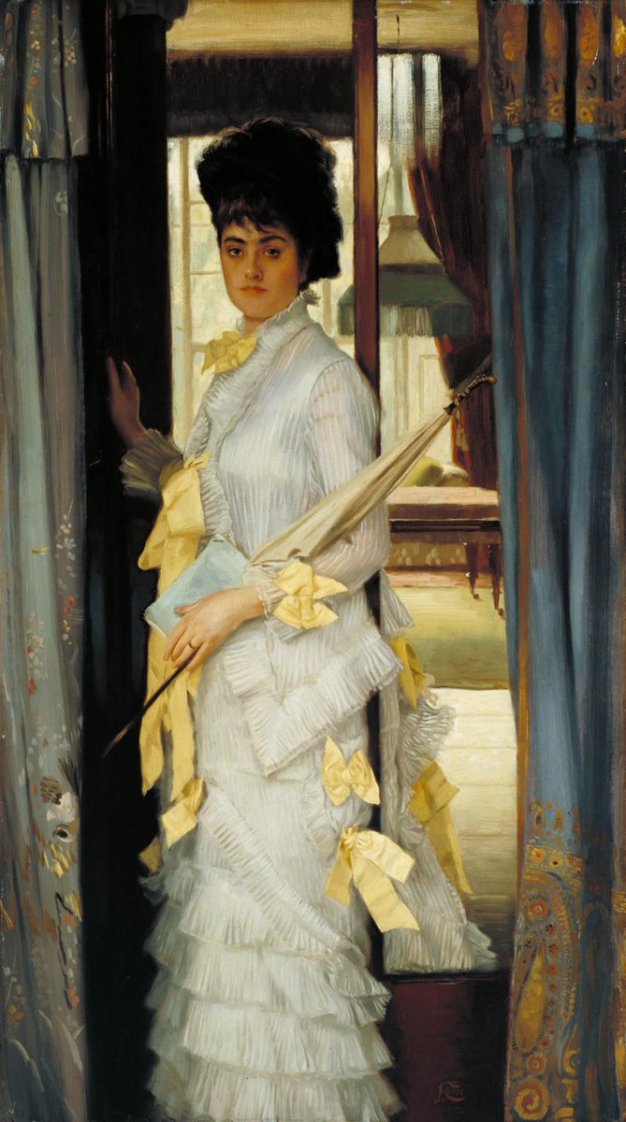




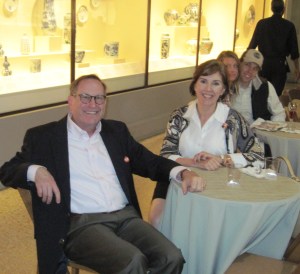
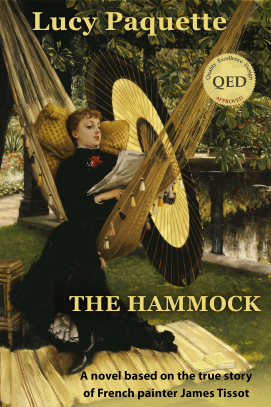











_-_Paris,_1871_-_St_Cloud,_La_place.jpg)
_-_Paris,_1871.jpg)



